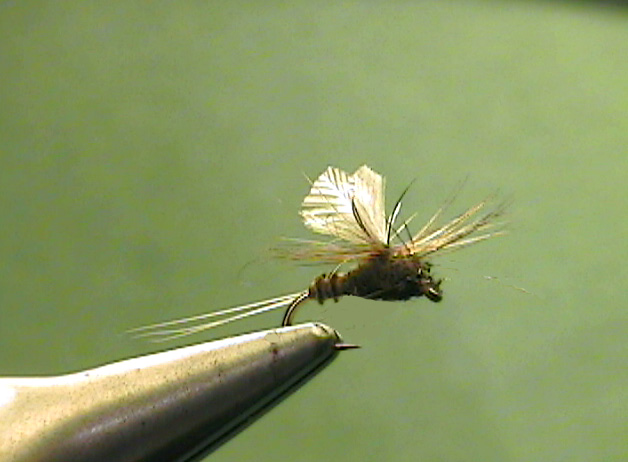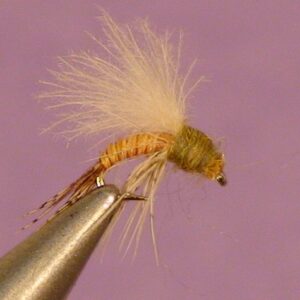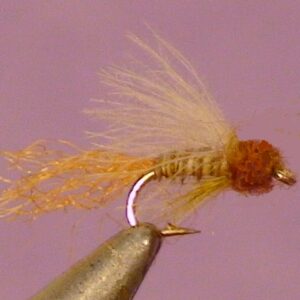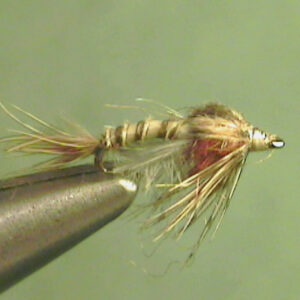Hook Size: 18
The Perfect Fly Blue Quill Dun is an excellent imitation of the adult stage of life of the mayfly. It imitates the mayfly as it drifts or floats on the surface, drying it wet wings enough to fly off the water onto the banks, bushes or trees where it will eventually change into the spinner stage of life. It even imitates the dun down to two or three tails and it two upright wings. It is fished on the surface as a dry fly. It should be treated with floatant. The dun bodies are a reddish brown color and the wings are slate gray. When
the duns hatch, they usually float a rather long distance on the surface of the
water before flying away, sometimes as much as twenty or thirty feet. This is
especially true at the early part of the hatch when the water is still cold. When
the water gets close to 50 degrees F. and higher, the trout will take the
duns very well. If you do not get results from fishing the dun imitations and the
blue quills are hatching, then you should go back to an emerger or nymph
imitation.
Dun Presentation:
Up and Up and across presentations of the dun imitations usually work best if
you are fishing the smooth edges of the current seams, or calm pocket in the
rough pocket water. If the water is slow moving and very slick or smooth, such
as the ends of long runs, the tail outs of pools and riffles, you may want to use a
down and across presentation to get the drag-free drift you need.
The duns may be caught in the fast water by the time they hatch, so it is a good
idea to fish the faster water that the duns are likely to be caught in after they
hatch. Now that sounds a little confusing but here is what I mean. To the side of
or below every slow section of water you will find a fast water seam that carries
that water away. Water in these types of areas where they hatch will collect the
Blue Quill duns and carry them downstream while they are still on the surface.
Keep in mind that they usually don’t drift on the surface for several yards, rather
several feet. Later in the hatch, if the water warms to as much as 55 degrees or
more, the duns may not drift far at all, so this changes during the duration of the
hatch.
Remember, these little mayflies may hatch for a month or even longer
than the Quill Gordons. You will need to make adjustments in your presentation
to adjust for this long emergence period of time. Don’t look for any heavy
concentrations of them. You probably won’t find that happening but you will find
duns on the water for several days.
Copyright James Marsh 2013




